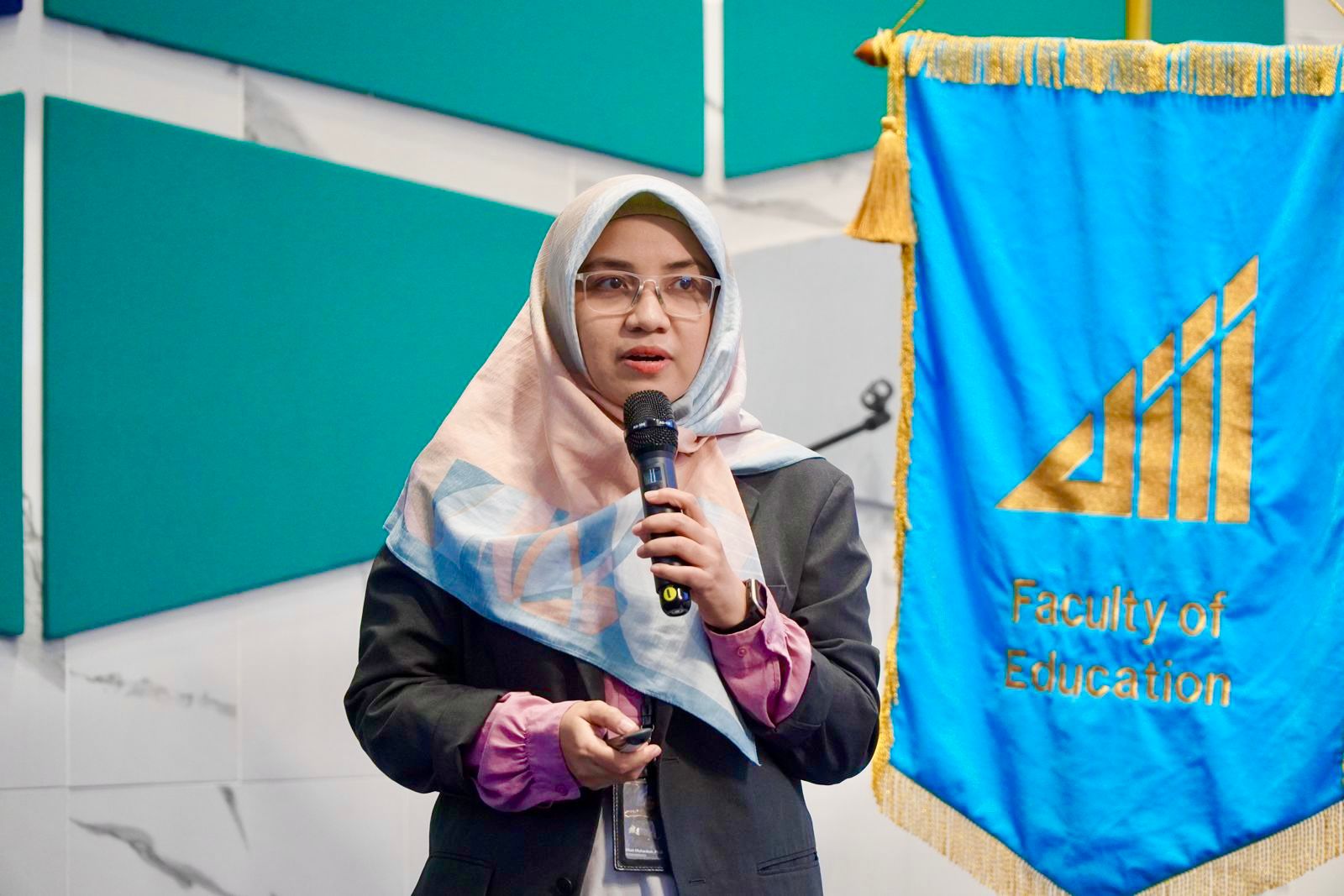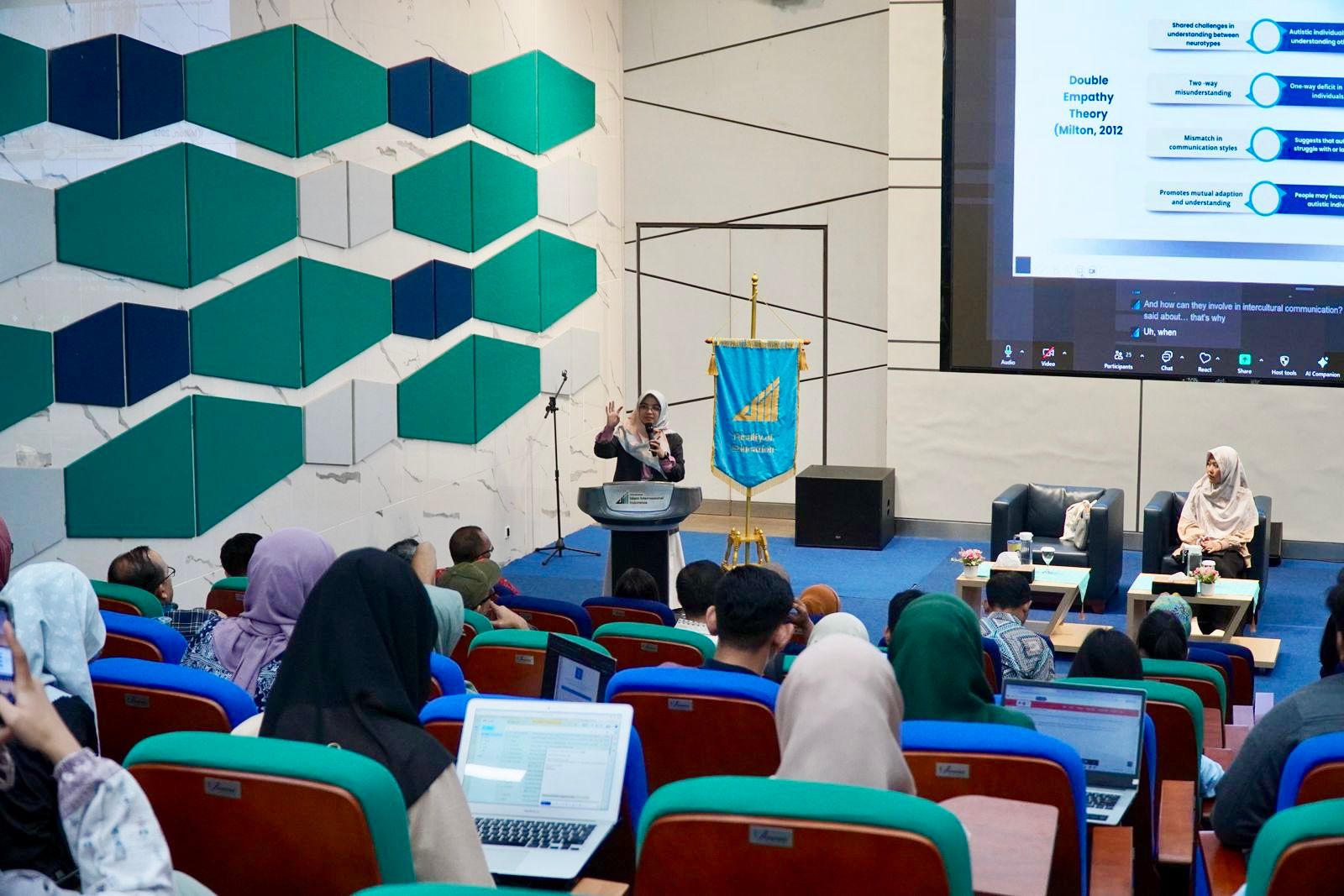September 30, 2025
Contributor: Supriyono | Photo: Virda Lalitya Umam

Have you ever sat in a group where everyone laughed at a joke you didn’t understand? Or tried to explain something repeatedly, only to be met with blank stares until you finally said, “Forget it”? Most people, when caught in such moments, feel annoyed, embarrassed, or even left out. But what if this wasn’t an occasional slip in communication—what if this was your everyday reality? For many autistic individuals, it is.
This was the entry point Afifah Muharikah, PhD, Lecturer at the Faculty of Education, Universitas Islam Internasional Indonesia (UIII), used to open LunchTalk #45 on September 23, 2025. Her presentation, titled “Cross-Neurotype Interactions in an English Classroom: Building Shared Understanding,” moved from that familiar sting of miscommunication to a much broader and deeper conversation about inclusion, empathy, and education.
 At the heart of her talk was the story of “Beeni,” one of her former students at the Jakarta State Polytechnic. Beeni, an autistic learner, often faced the exhaustion of being misunderstood—even when he used the “right” words. Instead of retreating, however, he worked out strategies: clarifying, prompting, repeating, and offering concrete examples until the message got across.
At the heart of her talk was the story of “Beeni,” one of her former students at the Jakarta State Polytechnic. Beeni, an autistic learner, often faced the exhaustion of being misunderstood—even when he used the “right” words. Instead of retreating, however, he worked out strategies: clarifying, prompting, repeating, and offering concrete examples until the message got across.
Through Beeni’s experiences, Dr. Afifah introduced the concept of cross-neurotype communication—interactions between neurotypical (conventional mind) and neurodivergent individuals (autism, ADHD, dyslexia etc). Misunderstandings here are not about incompetence or lack of effort; they emerge from differences in processing, timing, and expectations.
“Imagine waiting not just two or three seconds for someone to respond,” she explained, “but 15 or even 20. For autistic students, that’s perfectly normal. For neurotypical peers, it often feels like a problem. But what if we shifted our expectations?”
 Her argument was anchored in the double empathy theory, which counters the outdated notion that autistic people alone are responsible for failed communication. Instead, it frames communication breakdowns as a two-way street: both sides must adapt, negotiate, and build understanding together.
Her argument was anchored in the double empathy theory, which counters the outdated notion that autistic people alone are responsible for failed communication. Instead, it frames communication breakdowns as a two-way street: both sides must adapt, negotiate, and build understanding together.
To ground the discussion, she also mapped the evolving history of inclusive education in Indonesia—from charity-based practices before independence, to the 1977 presidential instruction that formalized “special schools,” to today’s movement toward inclusive, rights-based models. The shift, she argued, is not yet complete, but it reflects a growing recognition that disability is not a deficit—it is a dimension of human diversity.
Practical classroom strategies gave her talk a tangible impact. She suggested designing learning activities that tap into students’ passions, setting aside “quiet corners” to reduce sensory overload, and promoting explicit, clear communication. These measures, she stressed, don’t just support autistic learners—they create richer, more respectful classrooms for everyone.
 By the end of the talk, the audience was left with a pressing question: whose norms define “good communication”? Is it those of native English speakers, second-language learners, neurotypical students, or neurodivergent ones? Dr. Afifah’s answer was neither simple nor one-sided. Instead, she invited the audience to see communication as a shared responsibility—an achievement that depends not on conformity, but on mutual patience and openness.
By the end of the talk, the audience was left with a pressing question: whose norms define “good communication”? Is it those of native English speakers, second-language learners, neurotypical students, or neurodivergent ones? Dr. Afifah’s answer was neither simple nor one-sided. Instead, she invited the audience to see communication as a shared responsibility—an achievement that depends not on conformity, but on mutual patience and openness.
Her closing reminder was as practical as it was profound: building inclusive classrooms, and by extension more inclusive societies, requires more than technical competence. It requires empathy, flexibility, and the willingness to see differences not as barriers, but as bridges toward deeper understanding.
Universitas Islam Internasional Indonesia